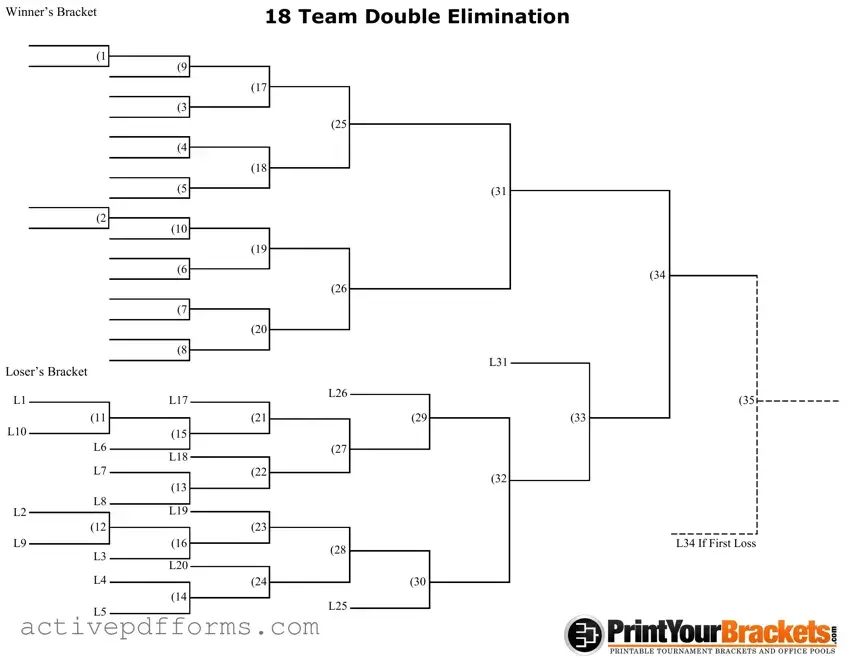The 18 Double Elimination form is a structured template designed primarily for tournaments where 18 teams compete until a winner is determined. This format is distinct because it allows for a team to lose once and still have the opportunity to win the tournament, thanks to its dual-bracket system: the Winner’s Bracket and the Loser’s Bracket. Initially, all teams compete in the Winner’s Bracket, and upon their first loss, they move to the Loser’s Bracket, where they have a second chance to fight for the championship. The form meticulously charts the path from the first round to the finals, ensuring clarity in the progression of matches. It coordinates the complex process of tracking which team moves forward or faces elimination after each game. Key elements include initial matchups, how losers of specific matches transition between brackets, and the critical “if first loss” matches, which accommodate teams that have made it through the Winner’s Bracket without a loss but then face a defeat. Through this method, the form ensures a fair and comprehensive way to determine the ultimate winner of the tournament, highlighting the need for strategic planning and resilience among participating teams.

